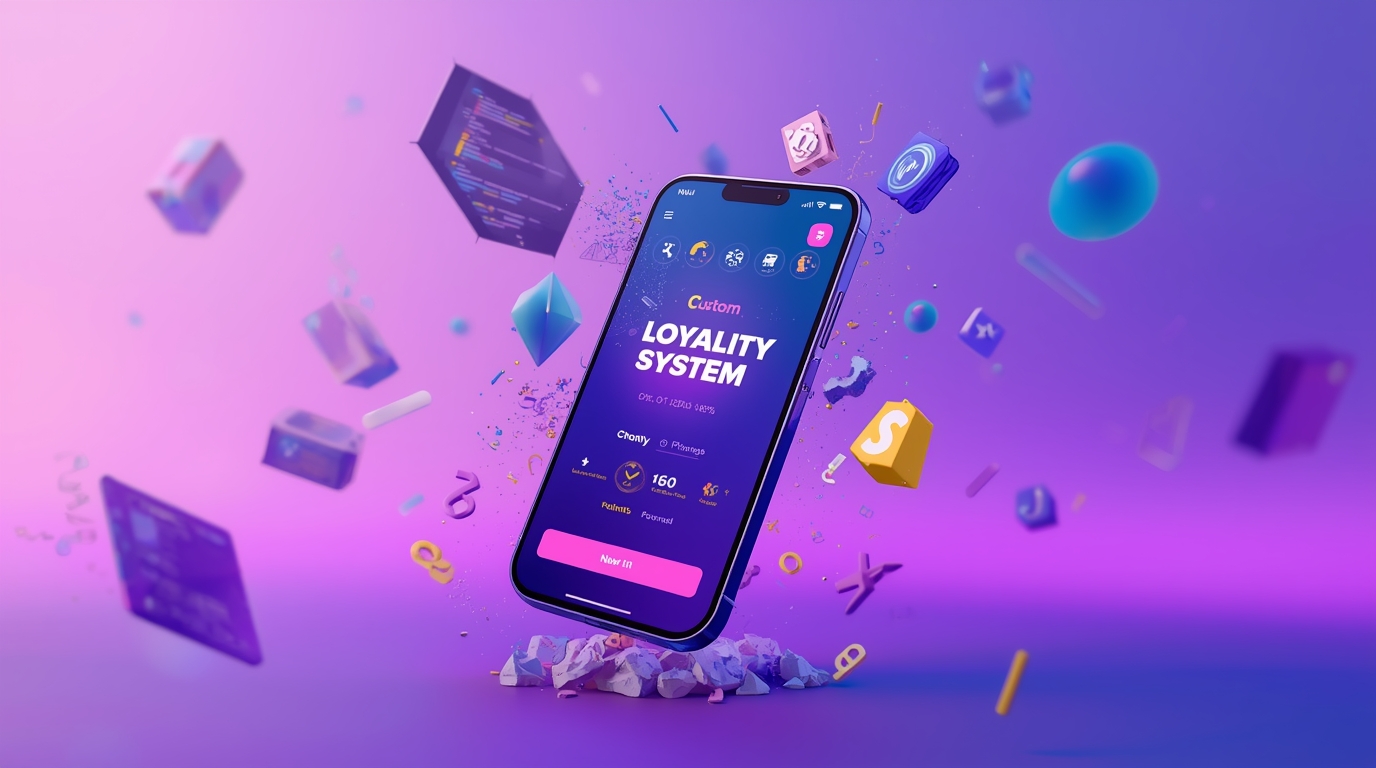In the exciting world of gaming, slot games hold a special place. They combine technology and entertainment, captivating millions of players with each spin. Slot game design is an art, blending innovation and anticipation to create an unforgettable experience.
This article explores the art and strategies behind slot game design development. We’ll uncover the mechanics that make these games tick, understand what players love, delve into the exciting features, and discuss creating a seamless user interface. Success in this field requires a dedication to craft slots games and a commitment to continuous improvement.

Join eJaw slot game design company on this journey through the world of slot game design development, where we’ll unravel the secrets that lead to success. So, how to make a slot game and how to develop a successful product?
Understanding Slot Game Mechanics
We’ll dig into the fundamental elements of slot games in this part, dissecting their operation and going over the critical design factors that give them their engaging and enjoyable qualities. How do slot machines work?
- Reel and Payline Structure: Slot games have vertical columns called reels that spin, displaying different symbols. The design of these symbols is vital – they need to be visually appealing and easily distinguishable. Paylines, the lines that connect these symbols, should be clearly marked and visually intuitive to ensure players understand how winning combinations are formed.
- Symbols and Combinations: Symbols are the heart of a slot game’s design. Designers need to create symbols that align with the game’s theme and resonate with the target audience. These symbols should have a consistent design language to maintain a cohesive visual experience. The combinations need to be carefully calculated to balance the excitement of wins with the sustainability of the game’s payout structure.
- Random Number Generators (RNG): The implementation of RNGs involves designing a complex algorithm that generates random numbers corresponding to the symbols on the reels. The challenge lies in creating an RNG that’s truly random and yet adheres to the desired probabilities for different symbols. Designers also need to consider how the RNG impacts the overall game flow and experience, ensuring it remains fair and unpredictable.
- Payout Percentages and Volatility: Designing the payout percentage and volatility involves finding the right balance to keep players engaged. The design challenge is to set a payout percentage that attracts players without compromising the game’s profitability. For volatility, designers need to craft an experience that maintains excitement, whether through frequent smaller wins (low volatility) or occasional substantial wins (high volatility), aligning with the target audience’s preferences.
Understanding these design-centric mechanics is crucial for anyone involved in slot game creation. By mastering the art of visually appealing symbols, intuitive paylines, fair RNG implementation, and balanced volatility, designers can craft captivating slot games that captivate players and stand out in the competitive gaming market.
Player-Centric Design Approach of Game Design Development

To create experiences that capture and keep a broad user base, slot game designers must adopt a player-centric mindset. Successful design techniques are based on an in-depth knowledge of player behavior, preferences, and motivations when you make a slot machine.
1. Analyze Player Preferences and Behaviors
- Research on Player Demographics and Preferences: Thorough market research is fundamental to comprehend the preferences of different player segments. Demographics, geographical locations, cultural backgrounds, and past gaming behaviors all contribute to shaping a game that resonates with a specific audience. Analyzing player data and feedback helps in identifying trends and patterns that can inform design decisions.
- Understanding the Psychology of Player Engagement and Retention: Slot games, much like other forms of gaming, tap into psychological triggers that keep players engaged. Factors such as anticipation, reward mechanisms, and a sense of achievement play crucial roles. Designers delve into behavioral psychology to craft game elements that trigger dopamine releases, providing players with an addictive and enjoyable experience.
2. Tailoring the Gaming Experience
- Implementing Engaging Themes and Storylines: The narrative and themes of a slot game are vital components influencing a player’s engagement level. From adventurous journeys to fantasy realms, a well-crafted theme can evoke emotions and immerse players in the gaming universe. Storylines add depth, creating a sense of purpose and excitement as players progress.
- Customizing Audio-Visual Elements to Enhance Immersion: Visual and auditory elements are powerful tools in creating an immersive gaming experience. Vibrant graphics, animations, and engaging sound effects can enhance the atmosphere, making the gameplay more captivating. An intricately designed audio-visual experience heightens player engagement and ensures they remain enthralled throughout their gaming session.
Game Features and Bonuses
Designing online slot machines with fascinating game elements and bonuses is essential for producing an engaging gaming environment. These components not only increase player involvement but also present chances for substantial winnings. Let’s explore these crucial components’ designs in more detail.
1. Innovative Game Features Design:
Designing captivating game features involves crafting unique elements that differentiate a slot game from others. One exemplary approach is the use of expanding wilds, where a wild symbol expands to cover an entire reel, enhancing the potential for significant wins. Games like “Book of Ra” by Novomatic brilliantly utilize this feature, creating anticipation and excitement among players.
Another ingenious feature is cascading reels, where winning symbols disappear and new ones fall in their place, creating a potential chain of wins. NetEnt’s “Gonzo’s Quest” showcases this design elegantly, offering players a dynamic and visually engaging experience.
2. Engaging Bonus Mechanics:
Bonuses are a vital aspect of slot game design, keeping players invested and eager for more. A popular bonus is the Free Spins feature, where players can spin the reels without wagering additional funds. “Starburst” by NetEnt brilliantly employs this bonus, creating a sense of anticipation and potential for big wins.
Moreover, implementing a bonus round that involves interactive gameplay, such as picking objects for rewards or navigating through a mini-game, adds an exciting dimension. The “Wheel of Fortune” bonus round in IGT’s “Wheel of Fortune Triple Extreme Spin” provides an immersive and interactive bonus experience.
Additionally, progressive jackpots are an enticing bonus mechanic, where a small percentage of each bet contributes to a growing jackpot. Games like Microgaming’s “Mega Moolah” showcase this design, offering the allure of life-changing prizes.
User Interface and Experience
Designing the user interface (UI) and overall user experience (UX) of a slot game is a critical aspect that can greatly impact a game’s success. Players are drawn to games that not only offer exciting gameplay but also provide a visually appealing and user-friendly environment. Here, we delve into the key considerations and provide examples of games that have mastered UI/UX design.
Designing an Intuitive User Interface
A well-crafted UI is the player’s gateway to the world of your slot game. It should be intuitive and easy to navigate, ensuring players can focus on the thrill of the game without being bogged down by complicated menus or cluttered screens.
Example 1: “Starburst” – NetEnt’s Starburst slot is a prime example of a clean and simple UI. It presents players with a straightforward layout, prominently displaying the reels and control buttons. The game’s intuitive design allows players to understand the mechanics and start playing immediately, making it a popular choice for both novice and experienced players.
Example 2: “Mega Moolah” – Microgaming’s Mega Moolah, known for its massive progressive jackpots, features a user-friendly interface. The game uses vibrant, jungle-themed graphics, enhancing the overall experience. The intuitive layout enables players to track their progress easily and keeps them engaged.
Enhancing User Experience
User experience goes beyond just the UI – it’s about creating an immersive and enjoyable atmosphere. Smooth animations, high-quality graphics, and attention to detail are crucial in this aspect.
Example 3: “Gonzo’s Quest” – NetEnt’s Gonzo’s Quest stands out for its immersive experience. The game features 3D animations and a storyline that follows the adventures of the main character, Gonzo. This combination of stunning visuals and a captivating narrative keeps players engaged, setting a benchmark for user experience in slot games.
Example 4: “Book of Ra” – Novomatic’s Book of Ra series is renowned for its themed sound effects and graphics. The game’s immersive atmosphere, inspired by ancient Egypt, transports players to a different world. This not only adds to the entertainment but also increases player retention.
Testing and Optimization – The Design Focus
In the realm of slot game design, the testing and optimization phase holds immense significance, especially concerning design elements. This section emphasizes the critical role of testing and provides insights using notable game examples:
A/B Testing for Design Elements
A/B testing proves instrumental in evaluating design components. For instance, “Cleopatra” by IGT underwent A/B testing to determine the optimal arrangement of symbols on the reels. Different variations were tested to identify the arrangement that provided the most visually pleasing and engaging gameplay, leading to a captivating player experience.
User Interface Refinements
Optimizing the user interface is vital for player engagement. “Immortal Romance” by Microgaming is a prime example of a slot game that saw substantial UI refinements. Iterative testing allowed designers to improve the visibility of essential game information, ensuring that players could easily access features and comprehend game dynamics.
Accessibility and Responsiveness
Ensuring accessibility across platforms is a critical design consideration. “Mega Fortune” by NetEnt was meticulously tested and optimized for various devices to provide a seamless gaming experience. The game’s design was fine-tuned to adapt effortlessly to both desktop and mobile screens, guaranteeing accessibility for a broader audience.
Design Iteration Based on Player Feedback
Player feedback can steer significant design improvements. “Rainbow Riches” by Barcrest underwent substantial design iteration based on player input. Feedback was collected regarding the color scheme, symbol clarity, and animations, resulting in a redesign that elevated the game’s visual appeal and overall player satisfaction.
Conclusion
Creating a fantastic slot game involves understanding how it works, what players like, and making the game easy and fun to play. eJaw, a top player in game design development, has nailed this. They make games that grab players’ attention and keep them hooked. By listening to players and using their expertise, eJaw has become a pioneer in crafting exciting slot games. This slot game design company pays attention to the small things and makes sure their games are not just cool to look at but also awesome to play. Following their example, new game makers can learn to use the latest tech and stay in the loop with what players enjoy. eJaw’s success story is a great lesson for anyone who wants to make it big in the gaming world!
Connect eJaw to make the best slot machine of your own.







